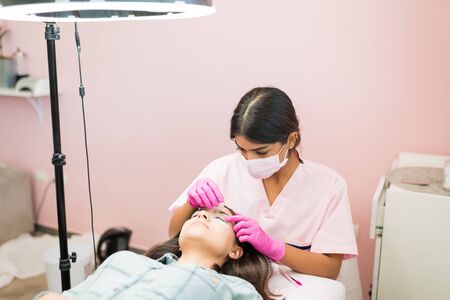Introduction to Ayurvedic Skincare for Young Skin
Ayurveda, India’s ancient system of natural healing, has been trusted by generations for its holistic approach to health and wellbeing. When it comes to skincare for kids and teens, Ayurveda stands out by focusing on gentle, safe, and plant-based ingredients that respect the delicate nature of young skin. Unlike mainstream skincare products that often rely on harsh chemicals or artificial fragrances, Ayurvedic routines are rooted in the use of herbs, oils, and natural extracts that work in harmony with the body’s unique constitution or Prakriti. In Indian households, these time-tested rituals are more than just beauty regimens—they are a way to nurture growing children and teenagers, supporting both their physical and emotional development. Emphasizing balance and prevention, Ayurveda encourages daily habits that not only protect but also strengthen the skin barrier naturally. This approach recognizes that every child is unique and requires a personalized routine based on their specific dosha—Vata, Pitta, or Kapha—making Ayurvedic skincare deeply meaningful and relevant to Indian families who value tradition as well as safety.
Understanding Your Child’s Dosha
In Ayurveda, every child is unique and their skin care needs are closely connected to their dosha, or body constitution. The three primary doshas—Vata, Pitta, and Kapha—each have distinct characteristics that influence not only health but also how the skin reacts to different environments and products. Identifying your child’s dominant dosha can help you make safe and effective skincare choices tailored for them.
Simple Ways to Identify Your Kid’s Dosha
You do not need complex tests to recognize your child’s dosha. Observing daily habits, physical features, and emotional tendencies can provide clear clues. Here is a simple guide:
| Dosha | Common Traits in Kids | Skin Characteristics |
|---|---|---|
| Vata | Thin build, active, creative, sometimes anxious, irregular hunger/thirst | Dry, rough, sensitive; prone to flakiness or chapping |
| Pitta | Medium build, energetic, sharp intellect, easily irritated when hungry | Soft, warm, often reddish; may have freckles or be prone to rashes and acne |
| Kapha | Sturdy build, calm nature, slow to anger, steady appetite | Thick, oily, cool; may be prone to clogged pores or dullness |
Why Dosha Matters for Skincare Choices
Selecting skincare based on your child’s dosha ensures gentle care that supports natural balance. For example:
- Vata kids: Need hydrating oils and creams that prevent dryness.
- Pitta kids: Benefit from cooling herbal infusions and lightweight gels that soothe sensitivity.
- Kapha kids: Respond well to gentle exfoliants and light moisturisers that avoid heaviness.
Cultural Tip: In India, families often use traditional herbs like neem for Kapha or aloe vera for Pitta as part of homemade remedies. Understanding your child’s dosha can help you choose the right natural ingredients passed down through generations.
By identifying your child’s dominant dosha with these easy observations, you can confidently select Ayurvedic skincare routines that are both safe and effective for Indian children and teens.

3. Gentle Cleansing Practices Using Local Ingredients
For Indian kids and teens, gentle cleansing is the first step to safe Ayurvedic skincare. Traditional Indian households often rely on time-tested home remedies that are both mild and effective for young, sensitive skin. Instead of harsh soaps or chemical-laden face washes, families use simple kitchen ingredients that have been trusted for generations.
Besan (Gram Flour): The Natural Cleanser
How Besan Works
Besan, or gram flour, is a staple in Indian homes and acts as an excellent natural cleanser. It gently removes dirt and excess oil without stripping the skin’s natural moisture barrier. For children and teenagers, besan can be mixed with water or milk to form a soft paste. This paste can be used as a daily face wash or even as a full-body cleanser during bath time.
Simple Besan Face Wash Recipe
Mix one tablespoon of besan with enough raw milk or plain water to create a smooth paste. Gently massage onto damp skin in circular motions for 1-2 minutes, then rinse off with lukewarm water.
The Power of Turmeric
Benefits for Young Skin
Turmeric, or haldi, is well-known in Ayurveda for its antibacterial and anti-inflammatory properties. Adding just a pinch of turmeric powder to the besan mixture helps prevent breakouts and soothes minor skin irritations—common concerns during puberty.
Caution:
Only a small amount of turmeric should be used to avoid staining the skin yellow. Always patch-test before using any new ingredient.
The Role of Milk in Cleansing
A Nourishing Addition
Raw cow’s milk is another beloved home remedy in India, prized for its natural lactic acid content which gently exfoliates and nourishes the skin. When added to besan or used alone as a gentle wipe, milk helps maintain softness and suppleness—perfect for delicate young skin.
A Family Tradition
These Ayurvedic cleansing methods are not only effective but also foster family bonding, as parents teach children traditional rituals passed down through generations. Using these everyday ingredients ensures that skincare remains safe, holistic, and rooted in local Indian culture—a beautiful way to care for kids’ and teens’ growing skin naturally.
4. Nourishing and Moisturising Methods for Delicate Skin
For children and teenagers in India, hydration and nourishment are essential steps in a safe Ayurvedic skincare routine. Indian climate varies from hot summers to monsoons and dry winters, so adapting moisturising practices seasonally is important. Natural oils and herbal mixtures are gentle, effective, and have been trusted for generations.
Choosing the Right Oils and Herbal Mixes
Coconut oil is widely used across India, especially in southern regions, as it cools the skin and provides deep nourishment. In North India, almond oil is preferred for its warming properties during colder months. Rose water is cherished nationwide for its soothing and hydrating qualities, suitable for all skin types including sensitive teenage skin.
Popular Natural Moisturisers
| Ingredient | Best Season | Key Benefits |
|---|---|---|
| Coconut Oil | Summer/Monsoon | Cools skin, prevents dryness, natural antibacterial properties |
| Almond Oil | Winter | Deep nourishment, rich in Vitamin E, helps with flaky skin |
| Rose Water | All Seasons | Tones skin, light hydration, calms irritation |
How to Apply for Maximum Benefit
Gently massage coconut or almond oil onto damp skin after bath time. For teens with oily or acne-prone skin, dab rose water using a cotton pad as a daily toner. During winter or in drier climates like Rajasthan or Delhi’s winter months, layering a few drops of almond oil under a natural moisturiser protects against harsh winds.
DIY Herbal Moisture Mixes at Home
A simple homemade mix can be made by combining equal parts aloe vera gel (fresh or pure), rose water, and a few drops of coconut oil. This blend hydrates deeply without clogging pores—perfect for pre-teens and teens undergoing hormonal changes. Always patch test before full application to ensure there’s no allergic reaction.
Seasonal Adjustments Matter
In humid regions like Kerala or Kolkata during monsoon, lighter oils like coconut absorb better without leaving residue. In the dry north or central states during winter, richer oils such as almond or even sesame oil offer lasting moisture. Ayurveda encourages tuning into nature’s cycles; teach children and teens to notice how their skin feels each season and adjust accordingly.
5. Safe Sun Protection and After-Sun Care
How to Naturally Shield Young Skin from the Harsh Indian Sun
India’s climate, with its intense sun and soaring temperatures, means that sun protection is essential for children and teenagers. However, many conventional sunscreens contain harsh chemicals that may not be suitable for delicate, developing skin. Ayurveda provides time-tested, gentle alternatives that are well-suited to Indian needs and traditions.
Sandalwood: The Traditional Cooling Protector
Sandalwood (Chandan) has been cherished in Indian households for centuries for its natural cooling properties. When applied as a thin paste made from sandalwood powder and rose water, it forms a soothing barrier on the skin, helping to deflect some of the sun’s heat and preventing redness or irritation. Its anti-inflammatory qualities also help calm any sun-induced discomfort.
Aloe Vera: Nature’s After-Sun Saviour
Fresh aloe vera gel is another Ayurvedic gem for young skin exposed to the sun. Easily available in Indian homes, aloe vera hydrates deeply, soothes minor burns, and supports skin healing after long playtimes outdoors. Parents can apply pure aloe gel directly from the plant or use trusted organic formulations free of additives.
Calendula: Gentle Repair for Delicate Skin
Calendula (often known as Genda in India) is renowned for its calming and reparative properties. Infused calendula oil or water-based creams can be gently massaged onto sun-exposed areas to reduce inflammation, promote recovery, and prevent dryness or peeling—making it ideal for sensitive young faces and arms.
Practical Tips for Everyday Sun Care
Encourage children to wear wide-brimmed cotton hats and loose-fitting clothes during peak hours, alongside these natural remedies. Reapply sandalwood paste or aloe gel after swimming or sweating. Always test new natural ingredients on a small patch of skin first to ensure compatibility. With these simple Ayurvedic approaches, families can confidently protect their children’s skin against the harsh Indian sun—without resorting to chemicals.
6. Common Skin Concerns in Indian Kids and Teens
India’s unique climate and lifestyle can bring about specific skin concerns for children and teenagers. From the humid summers causing prickly heat to dry winters leading to flaky skin, these issues are common across the country. Ayurveda, with its centuries-old wisdom, offers gentle yet effective remedies using local herbs and everyday kitchen ingredients, ensuring safety and natural care.
Prickly Heat (Ghamoriya)
Hot weather often leads to prickly heat, especially in active kids. Traditional Ayurvedic solutions recommend cooling agents like sandalwood powder (chandan) and neem leaves. Mixing sandalwood powder with rose water creates a soothing paste that calms irritation and prevents infection. Bathing with neem-infused water helps reduce inflammation and itching.
Dryness and Flaky Skin
During winter or after frequent washing, many children experience dry, rough skin. Ayurveda suggests nourishing the skin with coconut oil or sesame oil massages before bath time. These oils deeply moisturise without clogging pores. Applying a paste of mashed ripe banana and honey acts as a hydrating mask, leaving the skin soft and supple.
Mild Acne and Pimples
Hormonal changes in teens can cause mild acne or pimples. Tulsi (holy basil) and turmeric are popular Ayurvedic choices for their antibacterial properties. A face pack made from fresh tulsi leaves and a pinch of turmeric in curd helps control breakouts naturally. Multani mitti (Fuller’s earth) mixed with rose water also absorbs excess oil and soothes inflamed skin.
Home Remedies Using Kitchen Ingredients
Many effective Ayurvedic remedies come straight from your kitchen shelf. Cucumber slices placed on the face cool irritated skin, while aloe vera gel from the garden soothes redness and sunburns. Chickpea flour (besan) mixed with milk forms a gentle exfoliating scrub suitable for young skin.
Precautions for Sensitive Skin
Always do a patch test before applying any remedy to your child’s skin, as even natural ingredients may cause sensitivity in some cases. Choose pure, fresh ingredients, and avoid harsh commercial products with artificial fragrances or dyes for daily skincare routines.
Ayurveda empowers Indian parents to address common childhood skin troubles safely using time-tested local solutions—promoting healthy habits that last a lifetime.
7. Daily Healthy Habits and Mindful Rituals
In India, nurturing healthy skin in kids and teens goes beyond skincare products—it’s about embracing daily Ayurvedic lifestyle routines that support holistic wellbeing. Ayurveda teaches that beauty begins from within, and radiant skin is a reflection of balanced habits, mindful practices, and nourishing diets.
Lifestyle Routines for Clear Skin
Encourage children to follow a structured daily routine or Dinacharya, as recommended by Ayurveda. Waking up early, practicing oral hygiene with herbal tooth powders or neem sticks, bathing with gentle, natural cleansers, and keeping the body hydrated are essential steps. Ensure your child gets enough sleep to allow the skin time to repair and rejuvenate overnight.
Mindful Practices for Inner Glow
Simple mindful rituals such as deep breathing (Pranayama), meditation, and gratitude journaling help reduce stress—a common trigger for skin issues like acne and eczema among teens. Even a few minutes of silent reflection before bedtime can promote better sleep and emotional balance.
Yoga for Growing Bodies
Introduce age-appropriate yoga asanas like Tadasana (Mountain Pose), Balasana (Child’s Pose), and Surya Namaskar (Sun Salutation) into your child’s daily routine. These postures improve blood circulation, promote detoxification through sweat, and keep growing bodies flexible and strong—all while supporting healthy skin from the inside out.
Ayurvedic Diet Tips
An Ayurvedic diet focuses on fresh, seasonal fruits and vegetables, whole grains like millets or brown rice, nuts, seeds, and ghee. Incorporate turmeric milk (haldi doodh) for its anti-inflammatory benefits and avoid processed foods high in sugar or artificial additives that may aggravate sensitive young skin. Encourage children to drink warm water throughout the day to aid digestion and natural detoxification.
Cultural Touch: Family Bonding Over Rituals
Make these healthy habits enjoyable by turning them into family rituals—sharing morning yoga sessions, preparing wholesome meals together, or winding down with an oil massage using coconut or almond oil before bed. Such mindful routines not only support glowing skin but also strengthen family bonds and instill lifelong wellness habits rooted in Indian tradition.
By weaving these Ayurvedic lifestyle practices into daily life, parents can empower their children to enjoy vibrant health, confidence, and naturally radiant skin—celebrating the wisdom of India’s ancient heritage.

